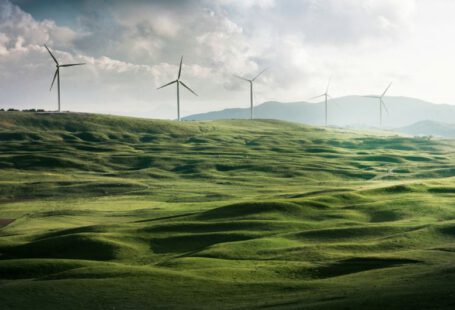In recent years, the fashion industry has been under increasing scrutiny for its environmental impact. From water pollution to textile waste, the traditional fashion industry has left a significant footprint on the planet. However, a growing movement towards eco-friendly fashion is challenging the status quo and proving that sustainability and style can indeed go hand in hand.
The Rise of Eco-Friendly Fashion
The term “fast fashion” has become synonymous with cheap, trendy clothing produced at a rapid pace, often at the expense of both the environment and laborers. However, eco-friendly fashion brands are changing the game by prioritizing sustainability throughout the production process. These brands focus on using organic and recycled materials, reducing waste, and ensuring fair labor practices.
Bye-Bye, Polyester; Hello, Sustainable Fabrics
One of the key ways that eco-friendly fashion brands are making a difference is through their choice of materials. Traditional fabrics like polyester are derived from non-renewable resources and contribute to microplastic pollution. In contrast, sustainable fabrics such as organic cotton, hemp, and Tencel are biodegradable and have a lower environmental impact.
Innovative designers are also experimenting with innovative materials like pineapple leather, made from discarded pineapple leaves, and mushroom leather, derived from mycelium. These alternatives offer a cruelty-free and eco-friendly option for fashion-forward consumers who want to make a positive impact with their clothing choices.
From Runway to Closet: The Accessibility of Eco-Friendly Fashion
While eco-friendly fashion was once associated with a niche market and higher price points, it is becoming increasingly accessible to the masses. Mainstream retailers are incorporating sustainable practices into their collections, offering affordable options for consumers who want to shop ethically without breaking the bank.
Additionally, the rise of second-hand and vintage shopping has made it easier than ever to find stylish, pre-loved pieces that reduce the demand for new clothing production. Thrifting not only helps divert clothing from landfills but also allows individuals to express their unique style without compromising on sustainability.
Fashion Forward: The Intersection of Style and Ethics
Contrary to the belief that eco-friendly fashion is synonymous with bland and shapeless clothing, many sustainable brands are proving that style and ethics can coexist. From chic minimalist designs to bold statement pieces, eco-friendly fashion is breaking stereotypes and showing that sustainability is anything but boring.
By embracing innovative design techniques and collaborating with artists and artisans, eco-friendly brands are creating collections that are not only fashionable but also tell a story. Consumers are increasingly seeking out brands with a transparent supply chain and a commitment to social and environmental responsibility, driving the demand for ethical fashion forward.
Parting Thoughts: The Future of Fashion
As awareness of the environmental and social impact of the fashion industry continues to grow, the demand for eco-friendly and trendy clothing is only expected to increase. By supporting brands that prioritize sustainability and transparency, consumers have the power to drive positive change in the industry and shape a more ethical and stylish future for fashion.
In conclusion, the answer to whether fashion can be both eco-friendly and trendy is a resounding yes. With the rise of eco-friendly fashion brands, sustainable materials, and a shift towards conscious consumerism, the fashion industry is undergoing a much-needed transformation. By choosing to support brands that prioritize ethics and aesthetics, we can all play a part in creating a more sustainable and stylish world.





